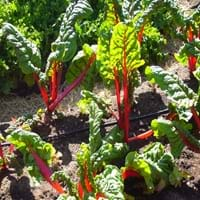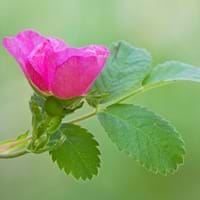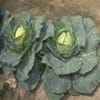Life Span
Biennial or Perennial
Perennial
Type
Vegetable
Flowering Plants, Ornamental Plant, Perennial
Origin
Europe
California, Caribbean, Mexico
Types
Leaf beet, Seakettle beet, Spinach beet
Not Available
Habitat
Cultivated Beds
Chaparral, Foot Hills, Woodlands
USDA Hardiness Zone
4-8
Not Available
AHS Heat Zone
12-1
Not Available
Sunset Zone
A1, A2, A3, H1, H2, 1a, 1b, 2a, 2b, 3a, 3b, 4, 5, 6, 7, 8, 9, 10, 11, 12, 13, 14, 15, 16, 17, 18, 19, 20, 21, 22, 23, 24
Not available
Habit
Clump-Forming
Upright/Erect
Flower Color
Red, Green
Variety of colors
Flower Color Modifier
Bicolor
Bicolor
Fruit Color
Tan
Non Fruiting Plant
Leaf Color in Spring
Dark Green, Green, Orange, Red, White, Yellow
Gray, Gray Green
Leaf Color in Summer
White, Yellow, Red, Green, Orange, Dark Green
Gray, Gray Green
Leaf Color in Fall
White, Yellow, Red, Green, Orange, Dark Green
Gray, Gray Green
Leaf Color in Winter
Not Available
Gray, Gray Green
Leaf Shape
Heart-shaped
Pinnate
Plant Season
Spring, Summer, Fall, Winter
Spring, Summer, Fall
Sunlight
Full Sun
Full Sun, Partial Sun
Type of Soil
Loam, Sand
Loam, Sand
The pH of Soil
Neutral, Alkaline
Acidic, Neutral
Soil Drainage
Well drained
Well drained
Bloom Time
Late Spring, Early Summer, Summer
Spring, Late Spring, Early Summer, Summer, Late Summer, Early Fall, Fall
Repeat Bloomer
No
Not Available
Tolerances
Drought
Drought
Where to Plant?
Ground
Container, Ground, Pot
How to Plant?
Seedlings
Cuttings
Plant Maintenance
Medium
Medium
Watering Requirements
Average Water Needs
Average Water Needs
In Summer
Lots of watering
Lots of watering
In Spring
Moderate
Moderate
In Winter
Average Water
Average Water
Soil pH
Neutral, Alkaline
Acidic, Neutral
Soil Type
Loam, Sand
Loam, Sand
Soil Drainage Capacity
Well drained
Well drained
Sun Exposure
Full Sun
Full Sun, Partial Sun
Pruning
Remove damaged leaves, Remove dead branches, Remove dead leaves
Remove damaged leaves, Remove dead branches, Remove dead leaves
Fertilizers
Apply 10-10-10 amount
All-Purpose Liquid Fertilizer
Pests and Diseases
Cercospora leaf spot, Damping off, Darkling beetles, Downy mildew
Beetles, Black Spot, Caterpillars, Downy mildew, Mosaic viruses, Powdery mildew, Rust, Scale insects, Thripes
Plant Tolerance
Drought
Drought
Flowers
Insignificant
Showy
Flower Petal Number
Not Available
Double
Edible Fruit
No
Not Available
Foliage Texture
Coarse
Medium
Foliage Sheen
Glossy
Glossy
Invasive
No
Not Available
Self-Sowing
Yes
Not Available
Attracts
Insects
Birds, Butterflies
Allergy
dark circles, Diarrhea, Runny nose, Vomiting, wheezing
Rash
Aesthetic Uses
Ground Cover
Showy Purposes
Beauty Benefits
Moisturizing, Remove blemishes, Slow downs aging, Speed hair growth
Not Available
Environmental Uses
Air purification
Air purification
Medicinal Uses
Antitumor, Carminative, Haemostatic, Stomachic, Tonic
Not Available
Part of Plant Used
Leaves, Root
Flowers
Other Uses
Cultivated for fodder, Eaten as a pot herb, Used to make juice
Oil is used in perfume, soaps, creams, etc.
Used As Indoor Plant
No
Yes
Used As Outdoor Plant
Yes
Yes
Garden Design
Bedding Plant, Container, Edible, Herb / Vegetable, Mixed Border
Container, Cutflower, Feature Plant, Foundation, Mixed Border, Topiary / Bonsai / Espalier
Botanical Name
BETA vulgaris ssp. cicla
Rosa californica
Common Name
Swiss Chard
California wildrose, California rose
In Hindi
Swiss Chard
कैलिफोर्निया गुलाब
In German
Swiss Chard
Kalifornische Hecken-Rose
In French
Chard suisse
Le rosier de Californie
In Spanish
Acelgas
Rosa californica
In Greek
Σέσκουλο
Καλιφόρνια αυξήθηκε
In Portuguese
Acelga suíça
California aumentou
In Polish
Boćwina
California róży
In Latin
Swiss Chard
California resurrexit
Phylum
Magnoliophyta
Magnoliophyta
Class
Magnoliopsida
Magnoliopsida
Order
Caryophyllales
Rosales
Family
Chenopodiaceae
Rosaceae
Clade
Angiosperms, Core eudicots, Eudicots
Not Available
Tribe
Cyclolobeae
Not Available
Subfamily
Betoideae
Not Available
Number of Species
Not Available
Properties of Swiss Chard and California Rose
Wondering what are the properties of Swiss Chard and California Rose? We provide you with everything About Swiss Chard and California Rose. Swiss Chard doesn't have thorns and California Rose doesn't have thorns. Also Swiss Chard does not have fragrant flowers. Swiss Chard has allergic reactions like dark circles, Diarrhea, Runny nose, Vomiting and wheezing and California Rose has allergic reactions like dark circles, Diarrhea, Runny nose, Vomiting and wheezing. Compare all the properties and characteristics of these two plants. Find out which of these plant can be used as indoor plant. If you are interested to decorate your house and garden, find out aesthetic uses, compare them and select the plant which will beautify your surrounding. Along with beautification, try comparing medicinal and edible uses of Swiss Chard and California Rose and you can choose the plant having best and most benefits.
Season and Care of Swiss Chard and California Rose
Season and care of Swiss Chard and California Rose is important to know. While considering everything about Swiss Chard and California Rose Care, growing season is an essential factor. Swiss Chard season is Spring, Summer, Fall and Winter and California Rose season is Spring, Summer, Fall and Winter. The type of soil for Swiss Chard is Loam, Sand and for California Rose is Loam, Sand while the PH of soil for Swiss Chard is Neutral, Alkaline and for California Rose is Acidic, Neutral.
Swiss Chard and California Rose Physical Information
Swiss Chard and California Rose physical information is very important for comparison. Swiss Chard height is 30.00 cm and width 30.50 cm whereas California Rose height is 150.00 cm and width 150.00 cm. The color specification of Swiss Chard and California Rose are as follows:
Swiss Chard flower color: Red and Green
Swiss Chard leaf color: Dark Green, Green, Orange, Red, White and Yellow
California Rose flower color: Variety of colors
- California Rose leaf color: Gray and Gray Green
Care of Swiss Chard and California Rose
Care of Swiss Chard and California Rose include pruning, fertilizers, watering etc. Swiss Chard pruning is done Remove damaged leaves, Remove dead branches and Remove dead leaves and California Rose pruning is done Remove damaged leaves, Remove dead branches and Remove dead leaves. In summer Swiss Chard needs Lots of watering and in winter, it needs Average Water. Whereas, in summer California Rose needs Lots of watering and in winter, it needs Average Water.





